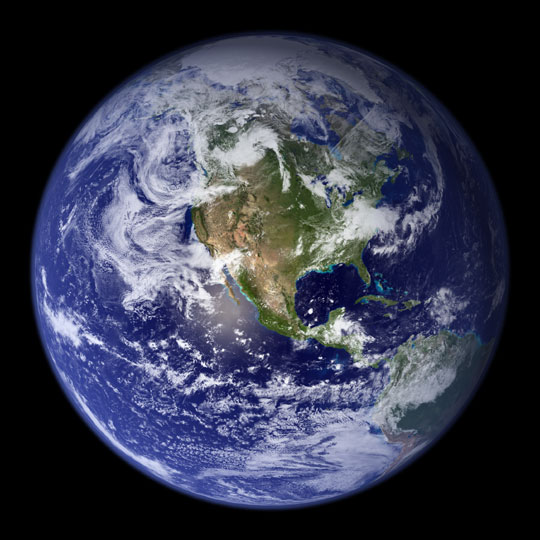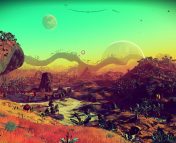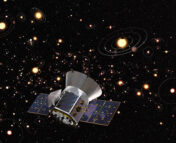This post was written by Madison Lee, a second-year undergraduate at the University of California, Los Angeles. Her interests include space exploration, exoplanets, and the detection of habitable worlds. Madison enjoys working with young students to educate them about new and fascinating concepts. In her free time, she also likes playing music and doing arts and crafts!

Title: Enhanced interplanetary panspermia in the TRAPPIST-1 system
Authors: Manasvi Lingam and Abraham Loeb
First Author’s Institution: John A. Paulson School of Engineering and Applied Sciences,
Harvard University, MA, USA
Status: Published in Proceedings of the National Academy of Sciences
Our sibling planets in this Solar System are lifeless, leaving Earth a lonely only child. We’ve searched far and wide for signs of life, but no matter how hard we look, we can’t seem to find another life-bearing planet. Naturally, our inability to find life elsewhere raises questions about how life began on Earth.
The recent discovery of seven Earth-like planets may help us find answers. In 2017, NASA announced the discovery of seven rocky planet siblings just 40 light years away, dubbed the TRAPPIST-1 system after the telescope that discovered these planets.
The TRAPPIST-1 system is essentially a tinier version of our Solar System. It’s parent star, an ultra-cool dwarf, is significantly cooler and smaller than our Sun, and about the same size as Jupiter. Astonishingly, as seen in Figure 1, all seven siblings orbit the star closer than Mercury orbits our Sun! The TRAPPIST-1 siblings are so squished together that if we stood on the surface of one planet, the other planets would look like giant moons in the sky.
While early press piqued public interest with the announcement of these Earth-like planets, many reports only focused on the basics of this system, such as the sizes, distances, and compositions of the planets and star. This left readers wondering, “If the TRAPPIST-1 planets are similar to Earth, shouldn’t we look for life there? Could it help us understand the origin of Earth life?”
To answer these questions, astronomers Manasvi Lingam and Abraham Loeb explored the possibility of life forming in the TRAPPIST-1 system. In their 2017 paper, they claim that TRAPPIST-1 planets have a higher probability of experiencing panspermia and abiogenesis than Earth and Mars.
Panspermia
Panspermia is the concept that space debris brought life (or ingredients for life) to Earth. Lingam and Loeb believe there’s a higher chance of panspermia in the TRAPPIST-1 system (compared to Earth and Mars) because the TRAPPIST-1 planets are so close together (similar to the distance between Earth and the Moon).
When a planet ejects material from its atmosphere, it either falls back down, or escapes into space and is pulled towards a new planet. The closer planets are, the stronger their gravitational pulls. Therefore, if planets are very close (as in the TRAPPIST-1 system), ejected rocks have a better chance of escaping the host planet’s atmosphere and traveling towards a nearby sibling planet, increasing the chance of panspermia.
Additionally, due to the close proximity of the TRAPPIST-1 siblings, we know the journey between TRAPPIST-1 planets is significantly shorter than a journey between Earth and Mars through cold, unforgiving space. Therefore, any microorganisms on ejected TRAPPIST-1 debris would have to survive space travel for a smaller amount of time, having a better chance of surviving.
Abiogenesis
Lingam and Loeb also claim that the higher chance of panspermia in the TRAPPIST-1 system implies a greater chance of spreading inorganic material, increasing the chances of abiogenesis (the theory that life evolved from inorganic material).
Consider an amateur baker with limited ingredients and no recipe. They will only have one chance to make the perfect cake and don’t know how, so they randomly mix things together to see what happens. Chances are, the baker will fail. However, if the baker continually acquires new material, they can experiment with different combinations until they create the perfect cake. Similarly, ejected rocks could bring more “ingredients” to the planets, giving them higher chances of creating live organisms. Therefore, a higher chance of panspermia in the TRAPPIST-1 system could lead to a higher chance of abiogenesis.
Three Smoking Guns
The increased chance of panspermia and abiogenesis means that life is possible on these planets, but how would we find it? The authors of today’s paper suggest three things to search for in our hunt for life: biosignature gases, a spectral “red edge,” and homochirality.
First, biosignature gases. Live organisms sometimes produce specific gases in the atmosphere, so finding some would indicate possible life. Scientists already search for these in other solar systems, so it makes sense to apply it to the TRAPPIST-1 siblings.
Next, the pair suggests looking for a spectral “red edge,” named after the red wavelength of light it uses. To find a spectral red edge, researchers look for dips of red wavelengths in planets’ spectrums, for plant chlorophyll absorbs red, making plants appear green. Thus, identifying something that absorbs red wavelengths would suggest there’s green plants on the surface, and therefore life.
Lastly, the pair suggest searching for homochirality. Chirality describes asymmetrical chemical molecules. Due to their asymmetry, organic molecules can “face left” or “face right” depending on how atoms connect. Homochirality means all the molecules face the same direction. On Earth, we find homochirality in live organisms — amino acids face left and sugars face right. Therefore, many scientists believe homochirality is a universal feature of life and are working on technology to detect homochirality on different planets with remote sensing.
Lingam and Loeb suggest that finding one of these “smoking guns” suggests life exists around TRAPPIST-1. They also note that finding multiple TRAPPIST-1 planets with identical pieces of evidence for life would suggest panspermia as the source of life in the system. Meanwhile, if these pieces of evidence are only found on one planet, it would suggest abiogenesis. Either way, it would be extremely exciting to know that Earth may not be the only planet with life.
What Happens Now?
We currently don’t have enough information to properly search for these smoking guns. However, the James Webb Space Telescope (Figure 2), set to launch in December 2021, will search for biosignatures using spectroscopy, which can detect atmospheric composition and biosignature gases! Scientists are hoping that this telescope will shed some light on the situation of each TRAPPIST-1 planet and possibly find signs of life.
It’s important to note that our focus on the TRAPPIST-1 system allows us to also better understand our universe as a whole. Since the TRAPPIST-1 system orbits an ultra-cool dwarf (the most common type of star in our Galaxy), any new information about TRAPPIST-1 and its planets will contribute greatly to our knowledge of our Galaxy and also help answer how life arose on Earth. If we do find life among the TRAPPIST-1 planets, perhaps Earth will finally have a lively cousin to connect with.
Astrobite edited by: Haley Wahl
Featured image credit: NASA/JPL-Caltech




